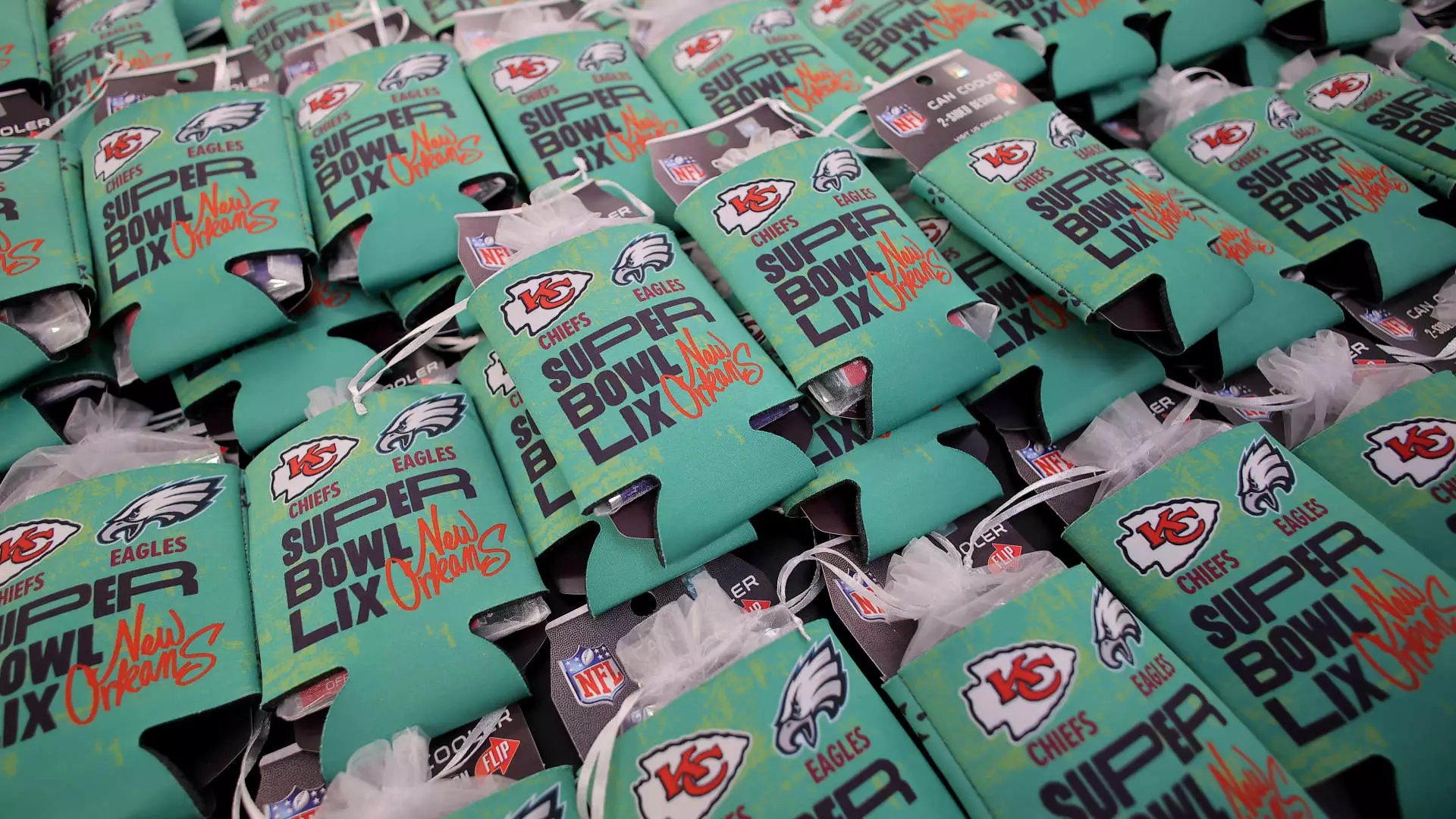The Super Bowl has long been the crown jewel of American sporting events and an advertising phenomenon that brands eagerly anticipate each year. With ad spots commanding prices upwards of $8 million, many advertisers believe the hefty expenditure is justified. As the Philadelphia Eagles and Kansas City Chiefs prepare to clash in Super Bowl 59, we delve into the dynamics of advertising during this monumental event and what makes it such a potent tool for marketers despite the evolving media landscape.
Nothing compares to the scale of the Super Bowl when it comes to drawing live television audiences. Historically, the game has attracted over 100 million viewers in a single broadcast, rendering it an unparalleled venue for advertisers aiming to make an impact. According to research from GroupM, the event generated approximately $550 million in ad revenue from in-game placements last year alone. This massive reach is particularly significant in today’s fragmented media environment, where fewer properties can guarantee such a large audience simultaneously.
“As the media landscape evolves, opportunities to secure such expansive reach are dwindling,” stated Amy Leifer, Chief Advertising Sales Officer at DirecTV. The comment underscores the rarity of such massive viewership in an age when audiences are increasingly consuming content across multiple platforms. Fortunately for advertisers, the Super Bowl offers a rare chance to connect with an expansive audience all at once.
In recent years, there has been a noticeable shift in advertising investments towards digital and social media platforms. Nevertheless, traditional television, specifically during high-stakes events like the Super Bowl, still commands a significant slice of the advertising pie. Advertisers maintain that TV remains the “most effective” method for engaging large audiences and generating sales conversions. Interestingly, data from EDO illustrates that Super Bowl ads have been shown to be up to 224% more effective than standard prime-time commercials.
This efficiency is not just anecdotal; it’s rooted in engagement metrics. Last year, EDO framed the Super Bowl viewing experience as offering the equivalent of 450 prime-time ads in terms of viewer engagement—painting a clear picture of why brands continue to invest heavily in Super Bowl spots.
The effectiveness of an ad during the Super Bowl is not only dependent on the financial investment, but also the creativity behind the campaigns. Marketing experts emphasize the importance of execution, as the same high-budget slot can yield different results based on the messaging strategy and creativity employed. Kevin Krim, CEO of EDO, emphasized the significance of the brand’s creative execution stating, “A fair price is contingent upon how well brands leverage their commercials.”
Some campaigns thrive on the heightened engagement generated during and after the game. Take, for instance, Kia’s introduction of the EV6 in 2022, or Reese’s recent launch of its Big Caramel Cup. These products experienced a surge in online interest and consumer interaction shortly after their respective Super Bowl ads aired. It’s clear that timely product launches during such a massive event can disproportionately benefit brands, extending their reach far beyond the commercial’s airtime.
Beyond national commercials, localized advertising strategies during the Super Bowl have become an intriguing avenue for smaller brands. Reach and engagement at a hyperlocal level can result in remarkable outcomes, as seen with the Zeam Media platform’s campaign featuring actor John Stamos. By targeting specific markets, Zeam saw millions of downloads following its ad’s airing, underscoring the potential of tailored ads in this context.
Andre Banks, a marketing strategist, points out how timing can enhance the effectiveness of an ad. Brands need to optimize placements, ensuring they align their spots with peak engagement moments to maximize viewer interaction. This strategic placement can mean the difference between successfully capturing an audience’s attention or simply being a fleeting moment in a packed commercial break.
As millions tune into the Super Bowl, many are also engaged in social media discussions simultaneously. This phenomenon presents brands with another layer of opportunity, as viewers take to their devices to comment, share, and interact during the event. Experts argue that advertisers should aim for seamless integration between their commercials and social media strategies, optimizing for “second-screen engagement.”
With predictions indicating significant growth in digital ad revenues outpacing traditional markets, the integration of social platforms presents an opportunity that brands cannot afford to ignore. Smart advertisers will harness this dual engagement strategy, improving outcomes significantly.
While the digital age reshapes the advertising landscape, the Super Bowl remains a beacon of opportunity for brands seeking to make a bold statement. As advertisers grapple with evolving consumer behavior and the rise of digital engagement, the strategies utilized—ranging from localized spots to creative executions and social media integration—will determine the tangible outcomes from this annual spectacle. As traditional television faces challenges from emerging platforms, the Super Bowl’s unmatched viewer reach and effectiveness continue to solidify its legacy as an advertising powerhouse.

